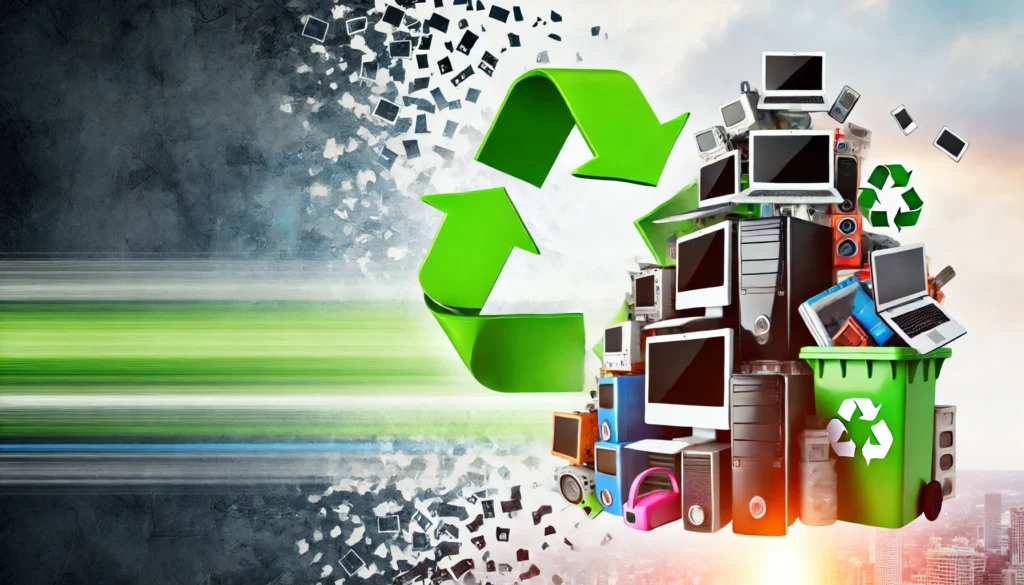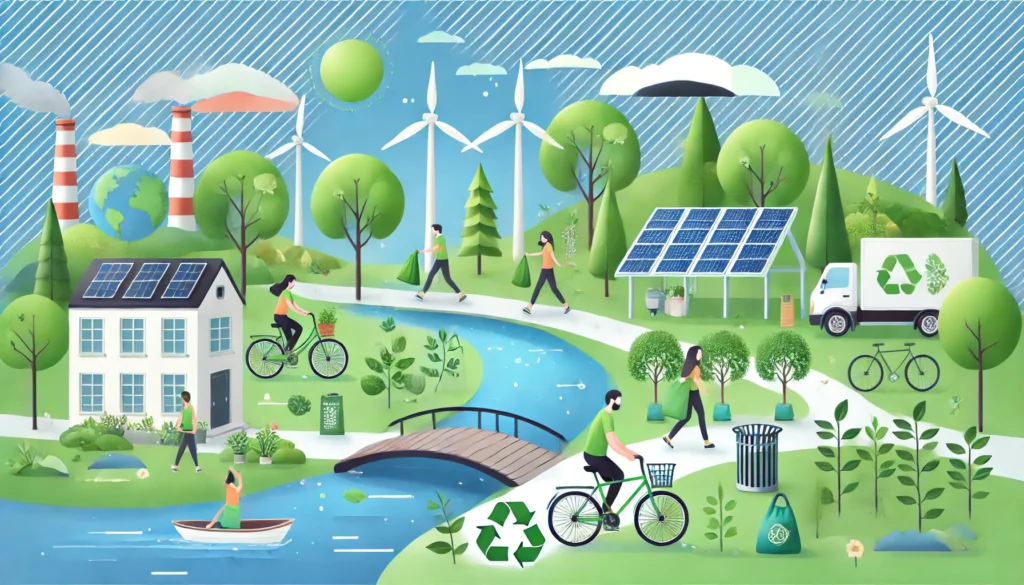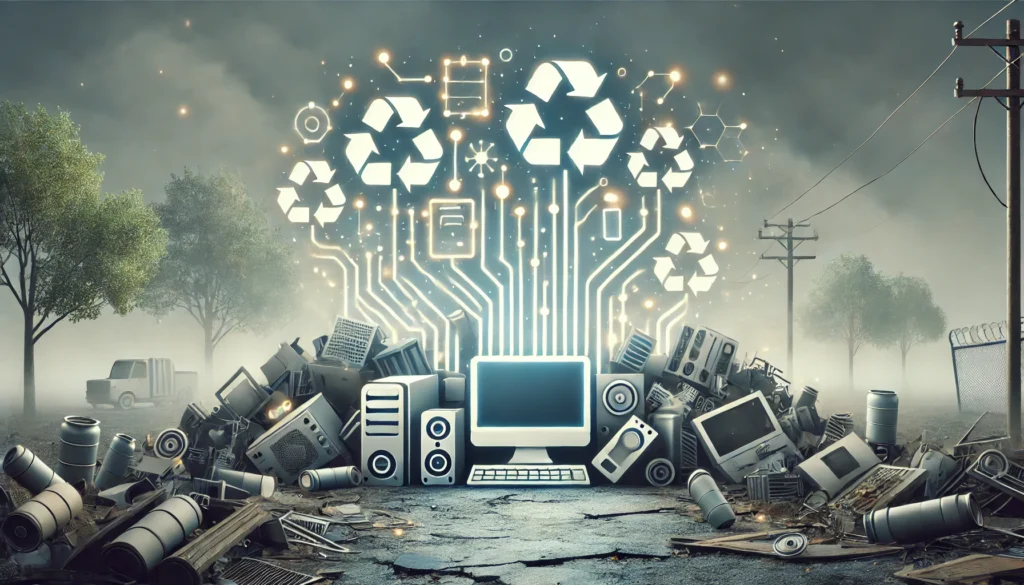In today’s world, technology is advancing rapidly, and with it comes an increase in discarded electronic devices, commonly known as e-waste. E-waste is a growing environmental concern. It includes all electronic devices that have reached the end of their useful life, such as old computers, mobile phones, and household appliances. Improper disposal of e-waste can lead to serious health and environmental hazards. In this blog post, we will explore what constitutes e-waste, its various components, and why proper disposal and recycling are essential for a sustainable future.
What is E-Waste?
E-waste refers to any discarded electrical or electronic device that is no longer functional or wanted. This waste can include anything from computers and mobile phones to refrigerators and batteries. With the constant evolution of technology, we often replace our devices with newer models, leading to a large amount of e-waste. But, many of these devices contain hazardous materials like lead, mercury, and cadmium that can harm human health and the environment if not handled properly.
For example, when you discard an old laptop or a broken mobile phone without recycling it, the toxic chemicals within these devices may seep into the soil and water, contaminating our environment.
Key Components of E-Waste
Let’s take a closer look at the major components of e-waste to understand why their proper disposal is crucial.
1. Computer Equipment:
- Items such as CPUs, monitors, laptops, keyboards, and motherboards are commonly found in e-waste. These devices contain materials like lead and mercury that can be harmful if not recycled correctly.
- Example: An old desktop computer sitting in your garage is a potential source of toxic chemicals.
2. Telecommunication Devices:
- Telecommunication devices like mobile phones, landlines, chargers, and routers fall into this category. These items often contain lithium-ion batteries, which can catch fire if not handled properly.
- Example: That outdated smartphone with a broken screen still contains valuable parts that can be recycled.
3. Consumer Electronics:
- This includes televisions, radios, cameras, and entertainment systems such as DVD players. These devices contribute heavily to the e-waste stream.
- Example: Your old TV may have been replaced by a new flat screen, but it still has components that can be harmful if thrown in the trash.
4. Household Appliances:
- Appliances like refrigerators, washing machines, microwaves, and air conditioners are also considered e-waste once they stop working. These items can leak harmful chemicals into the environment if not disposed of properly.
- Example: That unused washing machine in your basement contains refrigerants that contribute to ozone depletion.
5. Lighting Devices:
- Items like CFL bulbs, LED lights, and tube lights are part of e-waste. They contain small amounts of mercury, which can be dangerous if the devices break.
- Example: Broken CFL bulbs, when thrown in the trash, can release mercury vapor, which is hazardous to health.
6. Batteries and Cells:
- Lithium-ion, lead-acid, and other rechargeable or non-rechargeable batteries are key contributors to e-waste. If disposed of improperly, they can leak chemicals that contaminate soil and water.
- Example: The battery in your old phone might seem insignificant, but it can cause significant harm if not recycled.
7. Other Devices:
- E-waste also includes items like power tools, robotics equipment, gaming consoles, electronic toys, and circuit boards.
- Example: Your old gaming console gathering dust still has valuable electronic components that can be reused.
Why Proper Disposal of E-Waste is Essential
E-waste often contains precious metals like gold, silver, and copper, which can be recovered through recycling. However, without proper disposal methods, these valuable resources are lost. Moreover, hazardous chemicals from electronic waste can lead to serious environmental and health issues. For instance:
- Soil and Water Pollution: Toxic chemicals can seep into the ground and contaminate water supplies, affecting agricultural production and wildlife.
- Air Pollution: Improper disposal methods, such as burning e-waste, release harmful gases like dioxins into the air, which can lead to respiratory diseases.
- Human Health Risks: Exposure to harmful materials like lead and mercury from e-waste can result in various health problems, including damage to the nervous system and reproductive issues.
Practical Solutions for E-Waste Management
1. Recycling E-Waste:
- Recycling is one of the most effective ways to manage e-waste. Many cities offer e-waste recycling programs where you can drop off your old devices for safe disposal.
- Example: Instead of throwing your old laptop in the trash, take it to a local e-waste recycling facility where its components can be reused.
2. Donating or Selling Old Devices:
- If your device still works but you no longer need it, consider donating it or selling it. Many charitable organizations accept old electronics to refurbish and provide to those in need.
- Example: That smartphone you no longer use can make a big difference in someone else’s life if donated or sold.
3. Extending the Life of Your Devices:
- By taking good care of your electronic devices and performing regular maintenance, you can extend their lifespan and reduce the need for constant replacements.
- Example: Regularly cleaning and updating your computer can help it run smoothly for years, reducing the need to replace it prematurely.
E-waste is a growing problem that poses serious risks to both human health and the environment. From old computers to household appliances, the improper disposal of electronic devices contributes to air, soil, and water pollution. By understanding the components of e-waste and the importance of proper disposal methods, we can work toward a more sustainable future. Whether by recycling, donating, or simply taking better care of our devices, we can all contribute to reducing e-waste and protecting the environment.
Discover more from Green Ecosystem - Renewable Energy, Agriculture, and Environmental Sustainability
Subscribe to get the latest posts sent to your email.


